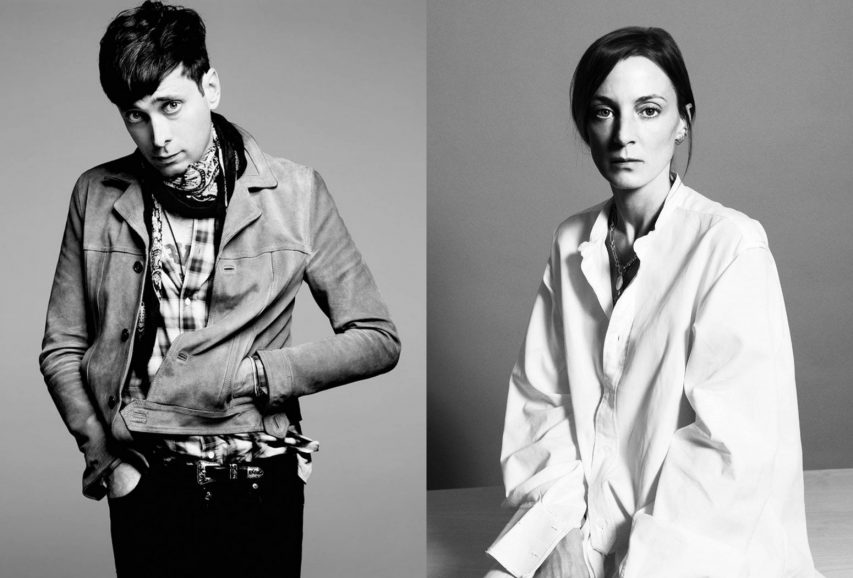The Unisex Project
and
Le Smoking
“It is a well-known fact that Chanel gave women their freedom; years later Saint Laurent brought them power.” – Pierre Bergé
In the 1960s, designers Rudi Gernreich and Yves Saint Laurent, presented their own visions for the future of clothing, unified by a goal of reinventing notions of masculine and feminine style.

Editorial by photographer Helmut Newton for March 1979 French Vogue – Gia Carangi and Robin Osler wearing Yves Saint Laurent
Introduced in 1966, Saint Laurent’s Le Smoking was an adaptation of a classic men’s tuxedo for women’s eveningwear, le smoking being how the tuxedo is referred to in French. This original ensemble consisted of a ruffled white shirt, a black bow tied round the neck, a wide satin cummerbund, and wide pants with satin stripes.

Le Smoking, Yves Saint Laurent – 1966 photo by Helmut Newton
“For a woman, Le Smoking is an indispensable garment with which she finds herself continually in fashion, because it is about style, not fashion. Fashions come and go, but style is forever.” – Yves Saint Laurent
Considered groundbreaking in that it was derived from men’s eveningwear, it reflected Saint Laurent’s attempt to capture women’s increasing independence and agency within society. He softened the tuxedo’s tailoring while retaining its angularity, maintaining the formal elements affiliated with the rationalism ascribed to menswear. While in its time Le Smoking was an innovative expression of gender and modernity, in this century its significance has come to seem both irrelevant and undermining, since it was based on a relatively rigid view of gender.
While the Smoking was created around 1860 and it was originally worn by English smokers to prevent their clothes from the tobacco smell, the Tuxedo appears twenty years later and comes from the name of the place Tuxedo Park Village in New York where it was worn for the first time instead of the usual suit.

Pierre Lorillard – a tobacco magnate of the 19th century & The “Tuxedo Park” Club
Gernreich was already known for avant-garde creations that challenged the conventions of fashion’s forms and its social frameworks when he presented what became known as The Unisex Project. In 1970, he created a spread of illustrations for Life envisaging what men and women would be wearing in 2000. He showed them in matching ensembles with shaved or bewigged heads, distinguished only by his rendering of breasts for women and muscles for men. Earlier versions of unisex clothing had often taken the form of menswear adapted for women’s wear, as in Le Smoking. But for Gernreich, unisex was about altogether doing away with baseline assumptions about gender.





